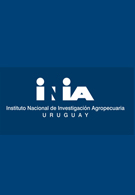ABSTRACT.- In a collaborative effort with private agents of the oilseed industry, INIA conducted a research study to determine the feasibility of framing soybean production in Uruguay into a sustainable development pathway. A spatial model based on land suitability analysis and the imposition of other soil restrictions (risk erosion, current regulations, and permanent soil uses) was adopted to estimate potential soybean yields and the most suitable cropping areas in the country. Assuming a national average production cost for soybeans, total costs were calculated by adding location-specific logistics and land rent costs. Crop economic margins were estimated using a combination of price, technology, and climate-change scenarios. Only areas exhibiting non-negative margins were considered suitable for sustainable cultivation. With all restrictions imposed, the potential soybean area on rotation with other crops and pastures in Uruguay would range between 2.1 and 2.9 million hectares, depending on the prevailing producer price level. Climate change effects did not show significant differences on their own. This ad-hoc approach can be useful for private and public decision-makers. It can be applied to any crop situation or region where the objective is to define how far it is possible to expand and intensify production sustainably, without compromising the environment. © 2025 by the authors.

